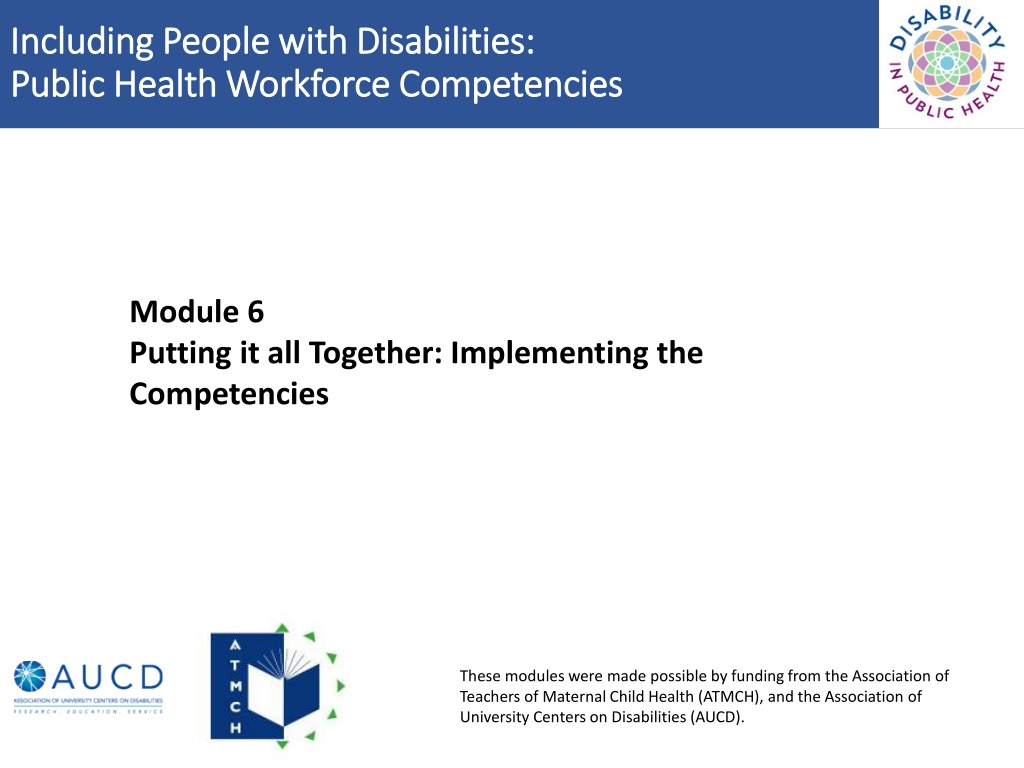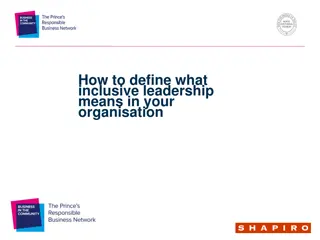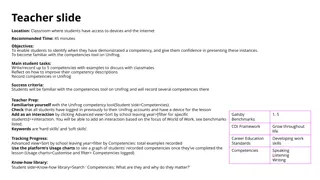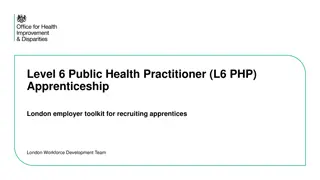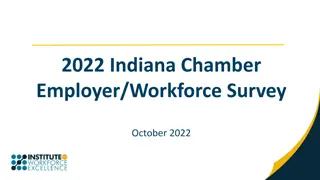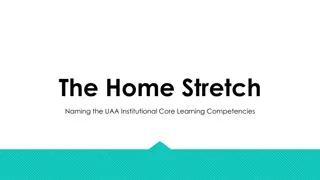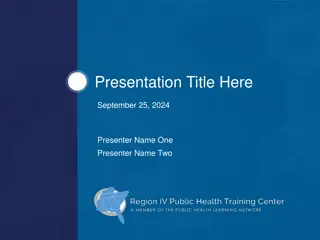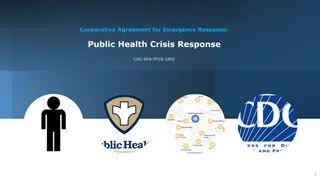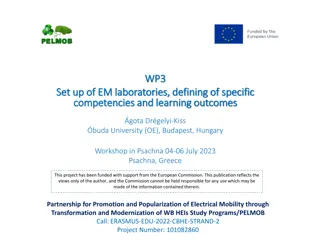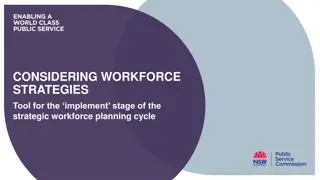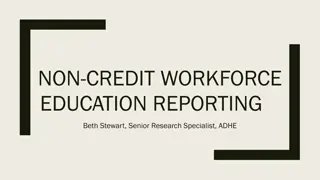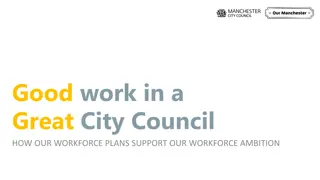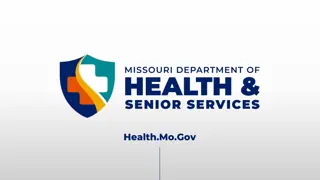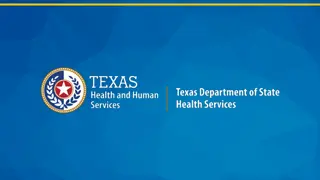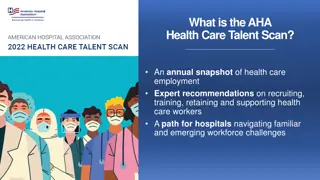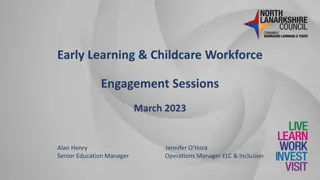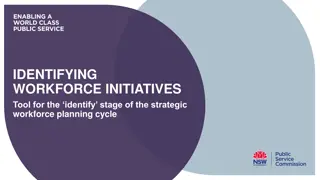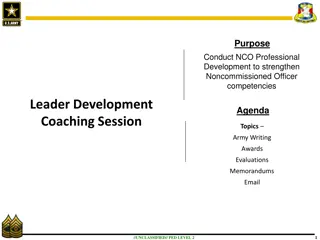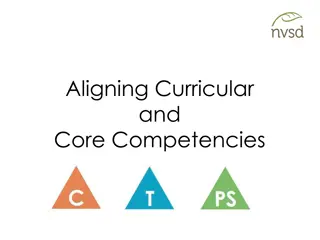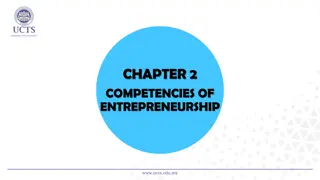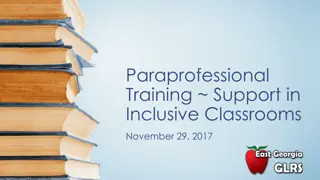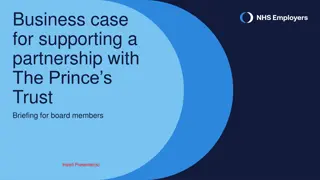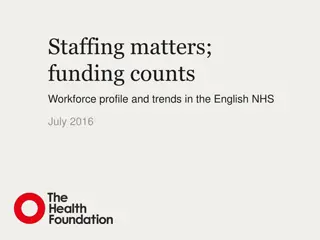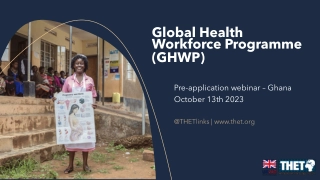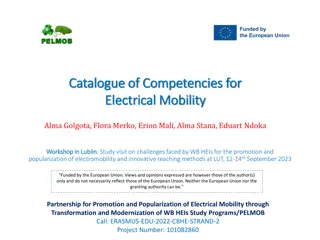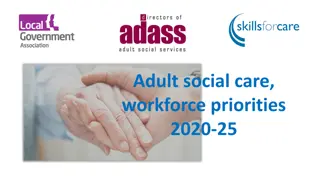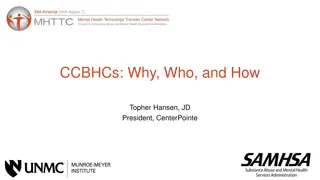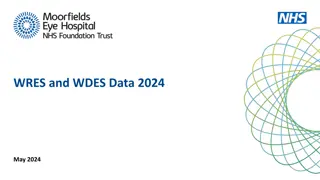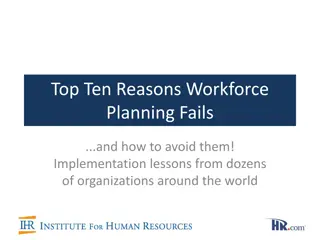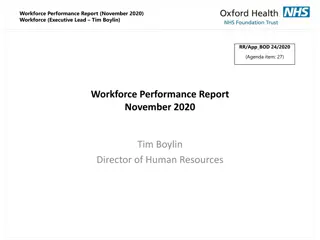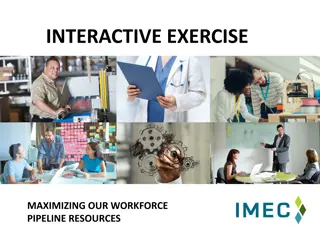Implementing Public Health Workforce Competencies for Inclusive Programs
This module focuses on implementing competencies for including people with disabilities in public health workforce programs. It highlights the importance of addressing health disparities among individuals with disabilities and provides examples, case studies, resources, and evaluation links to enhance understanding and practice in this area.
Download Presentation

Please find below an Image/Link to download the presentation.
The content on the website is provided AS IS for your information and personal use only. It may not be sold, licensed, or shared on other websites without obtaining consent from the author. Download presentation by click this link. If you encounter any issues during the download, it is possible that the publisher has removed the file from their server.
E N D
Presentation Transcript
Including People with Disabilities: Including People with Disabilities: Public Health Workforce Competencies Public Health Workforce Competencies Module 6 Putting it all Together: Implementing the Competencies These modules were made possible by funding from the Association of Teachers of Maternal Child Health (ATMCH), and the Association of University Centers on Disabilities (AUCD).
Module 6 Putting it all Together: Implementing the Competencies Including People with Disabilities: Including People with Disabilities: Public Health Workforce Competencies Public Health Workforce Competencies Welcome to Module 6 of the Including People with Disabilities: Public Health Workforce Competencies This module will provide an overview of: Implementation of the Competencies This module includes: Examples of Inclusive programs Case Studies Resources Evaluation link
Module 6 Putting it all Together: Implementing the Competencies Including People with Disabilities: Including People with Disabilities: Public Health Workforce Competencies Public Health Workforce Competencies Putting it all Together People with disabilities are at a higher risk for poor health outcomes There is a clear need for public health efforts to reduce health disparities among people with disabilities Knowledge about the health status and public health needs of people with disabilities is essential for addressing these and other health disparities The four Competencies and associated learning objectives will address the knowledge gaps for public health professionals about disability, and health disparities They provide foundational knowledge about the relationship between public health programs and health outcomes among people with disabilities The Competencies can also be embedded into existing public health curriculum and training programs
Module 6 Putting it all Together: Implementing the Competencies Including People with Disabilities: Including People with Disabilities: Public Health Workforce Competencies Public Health Workforce Competencies
Module 6 Putting it all Together: Implementing the Competencies Including People with Disabilities: Including People with Disabilities: Public Health Workforce Competencies Public Health Workforce Competencies Putting it all Together Implementation of these Competencies, and strategies, will build a stronger public health workforce skilled in ways to include people with disabilities in public health planning efforts and reduce health disparities for this population. Please refer to the examples, case studies, and resources to assist with implementation, and training Reflective Learning Reflecting back on what you are learning while implementing the competencies is essential. Taking time to reflect as a group or individually will enhance learning, collaboration, and professional development.
Module 6 Putting it all Together: Implementing the Competencies Including People with Disabilities: Including People with Disabilities: Public Health Workforce Competencies Public Health Workforce Competencies Implementation: Examples of Inclusive Programs & Case Studies
Module 6 Putting it all Together: Implementing the Competencies Including People with Disabilities: Including People with Disabilities: Public Health Workforce Competencies Public Health Workforce Competencies Examples of Inclusive Programs Programs designed to be inclusive at the outset expand reach, ensure accessibility and are more cost effective than retrofitting or modifying inaccessible programs Adults with disabilities in New York are 35% more likely to characterize their health as fair or poor compared with adult New Yorkers without disabilities New York State (NYS) also has the highest disability-associated health expenditures of any state in the country more than $40 billion The Disability and Health Program (DHP) within the New York State Department of Health (NYSDOH) initiated a policy change to ensure public health programs are integrating the needs of people with disabilities into initiatives The Inclusion Policy, which proposes including people with disabilities in the initial stages of procurement development, became a requirement in 2009 for programs and services released by the NYSDOH Center for Community Health (CCH) The DHP worked with the CCH to integrate disability components into a variety of public health programs, including tobacco cessation, food security, adolescent pregnancy prevention, and obesity prevention With this effort, approximately $123.5 million is saved annually
Module 6 Putting it all Together: Implementing the Competencies Including People with Disabilities: Including People with Disabilities: Public Health Workforce Competencies Public Health Workforce Competencies Examples of Inclusive Programs The University of Delaware s Center for Disabilities Studies initiated a partnership with the Nemours/Alfred I. duPont Hospital for Children (AIDHC), Christiana Care Health System, Inc., and the Delaware Division of Public Health with the goal of improving health care transition for CSHCN According to the National Survey on Children with Special Health Care Needs (CSHCN), 13% of all children in the U.S. under the age of 18 have a special health care need Coordinated services are critical for these children as they prepare to transition to the adult health care system However, data show that only 41% of Delaware s estimated 34,500 children with special health care needs receive transition preparation Since establishing the Division of Transition of Care in February 2010, AIDHC has prepared more than 150 children and young adults for transition through consultation, medical history summaries and referrals to adult provider
Module 6 Putting it all Together: Implementing the Competencies Including People with Disabilities: Including People with Disabilities: Public Health Workforce Competencies Public Health Workforce Competencies Examples of Inclusive Programs California s Living Healthy with a Disability Program: Tobacco Cessation Program for People with Disabilities serves a critical role in providing needed services to people with disabilities who are not usually targeted in state health promotion efforts In 2009, the California Department of Public Health (CDPH) and the California Smokers Helpline (Helpline) began a collaboration to reach more people with disabilities Activities included training for Helpline staff on how to work with PWD, revisions to Helpline materials and programmatic standards to ensure accessibility, and collaborating with disability organizations and health care insurers to disseminate Helpline information to clients with disabilities
Module 6 Putting it all Together: Implementing the Competencies Including People with Disabilities: Including People with Disabilities: Public Health Workforce Competencies Public Health Workforce Competencies Examples of Inclusive Programs The Michigan Disability and Health Program, in collaboration with the National Center on Health, Physical Activity and Disability (NCHPAD), hosted an inclusive fitness workshop, attended by over 50 fitness professionals from around the state Presenters from NCPAD discussed facility accessibility and inclusiveness, the increased importance of exercise for people with disabilities, and condition- specific concerns People with disabilities volunteered to be part of the hands-on portion of the workshop, allowing the fitness professionals to work with real people and real lifestyle challenges
Module 6 Putting it all Together: Implementing the Competencies Including People with Disabilities: Including People with Disabilities: Public Health Workforce Competencies Public Health Workforce Competencies Case study 1: Saving money by involving disabled people in the decision-making process- Leicester City Council Background: Between 2006 and 2008 a number of changes were made to Leicester city center. The Council assessed the impact of these changes and found that a number had an adverse effect on people with disabilities for example, increased walking distances to the shops and a loss of blue badge parking spaces. Action taken: In order to resolve these issues and to prevent similar problems from occurring in the future, Leicester Council worked with voluntary sector organizations to listen to the experiences of blind and partially sighted people who used the city center They also set up an Inclusive Design Advisory Panel (IDAP), with the purpose of advising council planners about the implications of their plans for disabled people The Panel is chaired by a councilor with an interest in inclusive design, and disabled people and disabled groups are involved in running it In order to ensure that the needs of disabled people (such as parking) are met in the future, all planning and design projects now come through the Panel Benefits : This approach has proven to be cost-effective to the organization. Before the panel s existence, disabled people s requirements in respect to access were often picked up too late, when projects were completed Problems were then costly to rectify and bad for the Council's reputation. Source: https://www.equalityhumanrights.com/en/advice-and-guidance/financial-benefits
Module 6 Putting it all Together: Implementing the Competencies Including People with Disabilities: Including People with Disabilities: Public Health Workforce Competencies Public Health Workforce Competencies Case study 2: North Carolina: Leveraging Resources and Partnerships North Carolina Department of Health and Human Services Services include targeted programs for the blind and deaf, Alzheimer s support, vocational rehabilitation, residential centers for people with developmental disabilities, and others However, even with this array of services, advocates for those with disabilities say there is a need for an entity to promote the health of people with disabilities and eliminate health disparities In North Carolina, that entity is the state Office on Disability and Health (NCODH) For the last two years, NCODH has provided the lead in shaping a new 10-year state plan to address the health needs of people with disabilities The plan s overarching goal is to ensure the same access to all aspects of healthy living for people with disabilities that is afforded other individuals in North Carolina Developing this new plan, called North Carolina s Plan to Promote the Health of People with Disabilities, included a series of 13 informational conversations that brought together public health subject matter experts, community organizations, service providers, and people with disabilities and their families http://www.astho.org/uploadedFiles/Programs/Access/Maternal_and_Child_Health/Disability_Case_Studies/North%20Carolina%20Disability%20Case% Source: 20Study%2020111206.pdf
Module 6 Putting it all Together: Implementing the Competencies Including People with Disabilities: Including People with Disabilities: Public Health Workforce Competencies Public Health Workforce Competencies Case study 3: A place for disability issues in the public health system of Gujarat, India Following its first interventions in Gujarat after the 2001 earthquake, Handicap International launched its pilot project on 'Early identification, Prevention and Rehabilitation of Disability' During the course of the project, it appeared that health and rehabilitation services needed more capacity and that disability issues were not yet integrated in the public health system The project Inclusion of disability issues into the public health system of Gujarat brings these changes to reality and impacts the lives of people with disabilities Objectives: Access to health care for disabled people People with disabilities are included in all mainstream activities Disabled people are progressively capable of breaking the poverty/ disability circle Impact: Disability has become a more visible issue within the Department of Health and Family Welfare Creation of state level Rehabilitation Training Task Force Advocacy of NGOs and a Disability Advocacy Group Source: http://ec.europa.eu/europeaid/documents/case-studies/india_health-care_disability_en.pdf
Module 6 Putting it all Together: Implementing the Competencies Including People with Disabilities: Including People with Disabilities: Public Health Workforce Competencies Public Health Workforce Competencies Source: Strategies for Successfully Including People with Disabilities in Health Department Programs, Plans, and Services. NACCHO
Module 6 Putting it all Together: Implementing the Competencies Including People with Disabilities: Including People with Disabilities: Public Health Workforce Competencies Public Health Workforce Competencies Here are Resources to Aid with Implementation and Training: Resources by Topic Draft of the Competencies document (version 1.9) Presentation Linked In Group - This group is to facilitate the sharing of practices, strategies, examples, and resources on including people with disabilities in public health planning efforts. Email - Direct questions and comments to disabilityinPH@aucd.org Website: www.DisabilityinPublicHealth.org
Module 6 Putting it all Together: Implementing the Competencies Including People with Disabilities: Including People with Disabilities: Public Health Workforce Competencies Public Health Workforce Competencies You have completed Module 6. Please click below for your certificate of completion: Certificate of Completion Module 6 Please complete this brief evaluation to help us assess and improve these training modules Evaluation Link For more information on this project, the learning modules, or to make comments, contact Shannon M. Haworth, Senior Program Manager, Disability and Public Health, AUCD or visit: www.DisabilityinPublicHealth.org Thank you!
